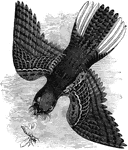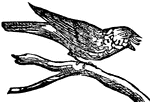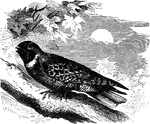Clipart tagged: ‘whippoorwill’

Whippoorwill
A whippoorwill chasing a winged insect. This bird derives its namesake from its distinctive call.

Whippoorwill
An American bird, allied to the nighthawk and nightjar, so called from its note, or the sounds of its…

Large Whippoorwill
"Antrostomus vociferus. Whippoorwill. Night-jar. Upper parts variegated with gray, black, whitish, and…

Small Whippoorwill
"Antrostomus vociferus. Whippoorwill. Night-jar. Upper parts variegated with gray, black, whitish, and…